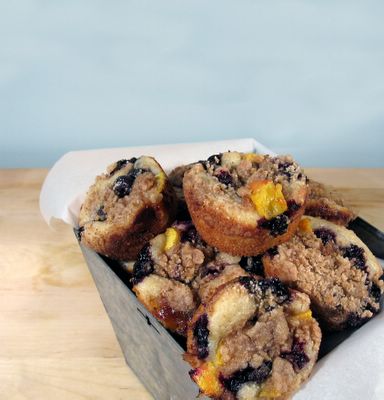Comfort comes in small packages
 Thursday, December 22, 2005 at 10:59AM
Thursday, December 22, 2005 at 10:59AM Recently at Seven Spoons:
Tara speaks from the depths of the couch, towers of magazines and cookbooks obscure her from view. Dear S is otherwise occupied with Ms. Billie, the feline mistress of the house, who is making quick work of the deconstruction of a bag of gift bows.
Tara: I’m torn. Florentines or tuiles? Both look lovely and would be perfect to package up for friends.
S: Uh huh, whatever you want, sweetie.
Tara: (opening another book, sending others flying) Take a look at these stunning cookies Martha’s made. Gingerbread snowflakes, piped with royal icing then dusted with sanding sugar. They sparkle so prettily - and you know I’m a sucker for anything with sparkles. I could do those, then some I saw in Gourmet ... I just need to find my copy ... (begins searching)
S: Do any of our friends like gingerbread? How about making the cookies from last year?
Tara: But that is boring.
S: But they were yummy. And I liked them.
Tara stops looking.
How can one not get excited to try new things come Holiday season? Bombarded with delectable images upon every magazine rack, bookshelf and television show, the season smacks of promise - there is always a new cookie to try, another way to roast a turkey, and this year’s penultimate side dish.
However, at least with my family, rarely do these new fangled recipes garner much praise. True they are well-received, but it is not often are they requested the year following. Not because they are not truly tasty, but because they are just not the tradition.
Take for example my father’s turkey. A few years ago he gallantly deboned an entire bird at our request, stuffed it with a savoury filling and then rolled into roulade - dark meat cradling the white meat inside. The turkey was perfect, moist throughout and utterly impressive.
Though it was, by far, the best bird I’ve ever eaten (and by my Mother’s command has been the only way we have celebrated the holidays for the last five seasons), there are still dissenters among the family. Since the turkey, no matter how beautifully tied, no longer resembles the classic image of a proper bronzed beast it is somehow considered inferior. My ever diplomatic Dad now roasts separate pieces of turkey to appease those souls.
It seems certain dishes are so firmly rooted in our sense of the season that we cannot be so foolhardy as to alter them. As we prepare the meal, going through the motions of making the brussels sprouts, stirring the gravy or getting out the same china we use every year - there is something inherent in these movements, in their ritual and rhythm that reminds us of years past and of memories shared. It is simply not Christmas without these tastes and smells and textures.
While I am all for innovation, I choose to spend this time looking forward and behind; taking note of now only where I am going but where I have been. There is comfort in the known, there is affection in tradition and there is pride in all that has stood up to the tests of time. Sometimes all that is needed are the tastes of home to assure us that there is still some right in the world.
These jam thumbprints are ridiculously easy and immediately invoke a sense of nostalgia, for a time we may or may not have known. Buttery shortbread, crowned with bronzed bits of coconut and gushing with a jam filling, you cannot get more classic than these.
Jam Thumbprints
Recipe published on Food TV.com courtesy of Ina Garten. Originally published in Barefoot Contessa Family Style. This recipe produces a fabulously rich shortbread base; experiment with different shapes and fillings to suit your tastes. I used Blackberry jam for my version, and upped the salt to 1/3 teaspoon.



















.gif)


